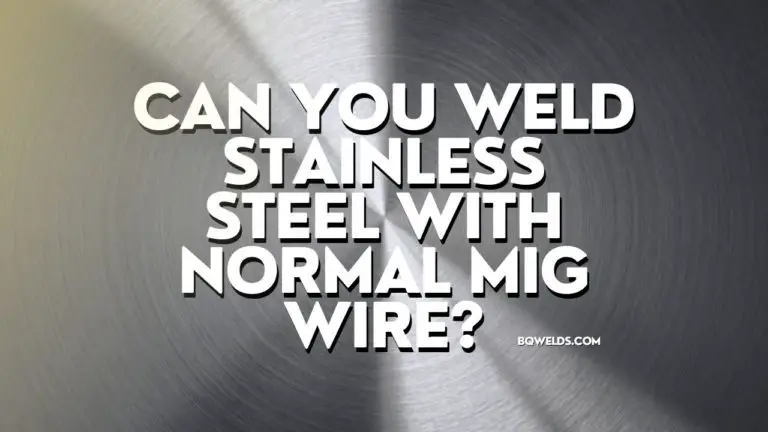If you’ve spent any time in the world of welding, you’ve probably asked yourself this exact question: can you weld stainless steel with normal MIG wire? It’s a valid query that might have confused many a novice and even some seasoned welders.
Well, it’s possible. But, there are several factors that you need to consider to ensure a good quality weld. Stick with me here, and let’s delve into the topic so you have all the details you need to understand this process.
For welding stainless steel, several types of MIG wires can be used:
- Stainless Steel MIG Wire: This wire is typically used for welding stainless steel. It has a higher percentage of silicon and can result in a smoother, more stable arc.
- Flux Core Wire: Made with a stainless steel outer shell, this wire contains flux within its core, which aids in welding and reduces the need for an external shielding gas.
- Solid Wire: This is the most commonly used wire for MIG welding. While it can be used with stainless steel, it’s important to note that it requires a shielding gas to protect the weld from contaminants.
- Metal Core Wire: This wire type has a higher deposition rate than solid wire, which can result in faster travel speeds and increased productivity.
Each of these wire types has its benefits and drawbacks, and the best one to use often depends on the specific requirements of the welding job at hand.
Advantages And Disadvantages Of Using Normal MIG Wire
Advantages of Using Normal MIG Wire
- Cost-effective: Normal MIG wire is generally less expensive than specialized stainless steel MIG wire.
- Accessibility: It is more readily available in stores and online, making it a convenient choice.
- Versatility: It can be used for various metals, not just stainless steel.
Disadvantages of Using Normal MIG Wire
- Quality Concerns: The weld quality may be lower than when using stainless steel-specific MIG wire.
- Rust and Corrosion: Normal MIG wire does not have the same level of corrosion resistance as stainless steel wire, which could lead to rust over time.
- Additional Requirements: It necessitates using a shielding gas to prevent weld contamination.
Tips To Get The Best Results
Here are some tips to get the best results when welding stainless steel with regular MIG wire:
- Proper Cleaning: Ensure the material is clean before you start. Oil, dirt, and rust can lead to contamination and poor-quality welds.
- Shielding Gas: Always use a suitable shielding gas. Pure argon or a mixture of argon and carbon dioxide is generally recommended.
- Right Amperage: Use the correct amperage for the thickness of the material. Too high and you risk burning through the metal; too low and the weld may not penetrate properly.
- Right Wire Speed: Adjust the wire feed speed for optimal performance. A too-high or low speed can affect the arc’s stability and the weld’s quality.
- Regular Inspection: Inspect your welds regularly for any signs of contamination or poor fusion.
Safety Precautions When Working With Stainless Steel And Normal MIG Wire
Safety should be your top priority when working with stainless steel and normal MIG wire. Here are some safety precautions to observe:
- Proper Protective Gear: Always wear the correct personal protective equipment (PPE) when welding, including a welding helmet with the right lens shade, a flame-resistant jacket, gloves, and safety shoes.
- Ventilation: Ensure adequate ventilation in your workspace to prevent exposure to harmful fumes and gases produced during welding.
- Shielding Gas Safety: Handle shielding gas cylinders carefully. Always secure them upright, away from heat sources, and ensure the valve is turned off when not in use.
- Clamp Workpieces Securely: Make sure they are clamped securely before welding to prevent them from moving and causing accidents.
- Fire Safety: Keep a fire extinguisher closed in case of a fire. Remove any flammable materials from the welding area.
- Electrical Safety: Check all equipment for any damages before use. Never weld in wet areas to avoid electrical shock.
- Proper Training: Ensure you are appropriately trained in using all welding equipment and understand the risks associated.
You can weld stainless steel with normal MIG wire. However, it’s essential to consider factors such as the type of MIG wire, the welding process, and safety precautions. Always follow best practices and consult a professional with any doubts or concerns.



Add comment